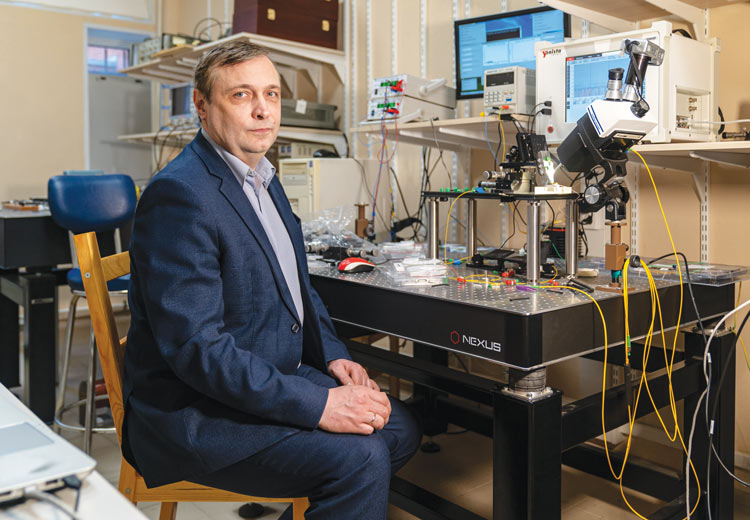A new direction for artificial neural networks

Researchers at Saint Petersburg Electrotechnical University are making strides in the development of reservoir computing to advance the performance of artificial intelligence
Scientists working in the department of physical electronics and technology at Saint Petersburg Electrotechnical University (LETI) have won the support of the Russian government for their project on reservoir computing, which aims to advance research in artificial intelligence (AI) and the development of neural networks.
With digitalisation reshaping the way we live, AI is becoming increasingly sophisticated, prompting efforts to develop computers that mimic the human brain. One such method is known as reservoir computing, which allows hardware devices to achieve the higher-dimension calculations required by emerging AI.
LETI’s latest project in this field focuses on how reservoir computers based on the principles of magnonics can offer a new direction for artificial neural networks. The project is headed by Mikhail Kostylev, professor in the department of physics at the University of Western Australia.
Under Kostylev’s leadership, researchers will develop new hardware for computing platforms based on the principles of functional electronics, using spin waves in ferromagnetic films. One of the applications of the results obtained by the project will be the creation of reservoir computers capable of solving big data processing problems.
According to Alexander Semenov, head of the physical electronics and technology department at LETI, receiving financing from the Russian government’s mega-grant programme is an acknowledgement of the high status of the university’s scientific research. In addition to supporting LETI’s research, the grant will allow the university to create a new laboratory equipped with modern technological and measuring equipment.
Since the department was established 65 years ago, its focus has been functional super high frequency (SHF) electronics and the technology to create SHF microelectronic devices. Unlike standard electronics research and development, the department of physical electronics and technology studies functional devices based on materials with unique properties such as ferromagnetism, ferroelectricity and superconductors.
Orest Genrikhovich Vendik, one of the founders of the department, participated in the development of the first antennas with non-mechanical beam steering in 1955. The results of Vendik’s project serve as the basis for antenna design today and were used by specialists in the development of radar systems.
A more recent example of the department’s fusion of scientific development and education is microwave photonics, which it began teaching students in 2015. It was the first faculty in Russia to do so. Today, the development of microwave photonics is linked to a variety of telecommunications systems, including navigation and location systems, as well as mobile phones.
LETI’s students are encouraged to find work in leading research and industrial organisations, which helps them successfully start their careers. “Our training gives students the opportunity to graduate with a certain background,” Semenov says. “By the time they graduate, they will already have research published in prestigious journals and will have gained experience of speaking at conferences.
“From an education point of view, these students usually have a better understanding of the course. They know what they need to do to make their self-learning effective, which gives them the opportunity to easily enter postgraduate education, not only with us but with any university, even in Europe”.
Find out more about LETI.